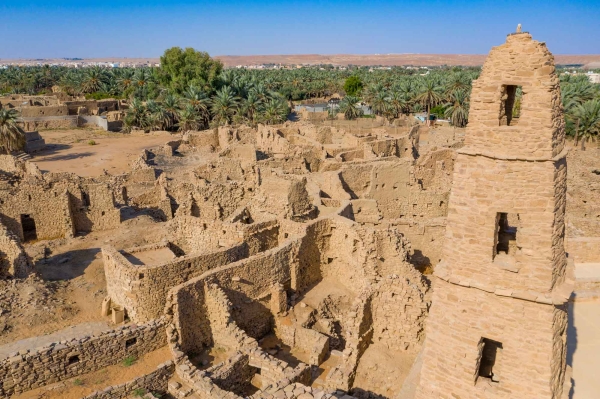



Al-Dar'i Historical Neighborhood is a historical neighborhood located in Dawmat al-Jandal City, al-Jawf Province, north of the Kingdom of Saudi Arabia. It was built in the fifteenth century and covers an area of approximately thirty thousand m. The neighborhood was added to the United Nations Educational, Scientific and Cultural Organization (UNESCO) list on October 24, 2014.
Al-Dar'i Neighborhood history
Excavation and digging efforts led to the discovery of Assyrian pottery dating back to the eighth century BCE, overlaid by layers from the Nabatean period, dated between the first century BCE and the first century CE. Archaeological evidence indicates that the neighborhood continued to be inhabited during the early Islamic period and subsequent eras. It is considered one of the oldest neighborhoods in Dawmat al-Jandal and al-Jawf Province. Near the neighborhood, there are several farms, the regional museum, and the old Emirate Palace.
Relics of al-Dar'i Historical Neighborhood
Within al-Dar'i Historical Neighborhood, there are important archaeological landmarks such as the Umar Ibn al-Khattab Mosque and Marid Castle. The neighborhood has five entrances: the southern entrance leads to the Umar Mosque, Marid Village, and the market; the eastern and western entrances lead to a series of farms and residential areas. Additionally, al-Dar'i Historical Neighborhood houses around forty stone-built homes, connected by narrow pathways. Some of these homes have one floor, others have three floors, and most have two floors. The buildings in the neighborhood were constructed on ancient foundations, dating back to the first century BCE, with narrow pathways used to connect the homes within the neighborhood.
Location of al-Dar'i Historical Neighborhood
The neighborhood is one of the remaining relics of the ancient city of Dawmat al-Jandal, having survived the demolition that affected the historical Dawmat al-Jandal market around twenty-five years ago.
Structures of al-Dar'i archaeological neighborhood
The structures of the neighborhood date back to the medieval Islamic period, but they are built on archaeological layers and foundations that date to the mid-first millennium BCE. The neighborhood is characterized by its stone buildings and its location among orchards and water channels, which provided life to the inhabitants through nearby springs.
The neighborhood reflects the cultural depth, historical significance, and architectural heritage of al-Jawf Province, which is one of the richest provinces in the Kingdom in terms of relics, drawings, inscriptions, and writings from the Islamic, Thamudic, Nabatean, and Roman periods.
Related quizzes
Related articles
